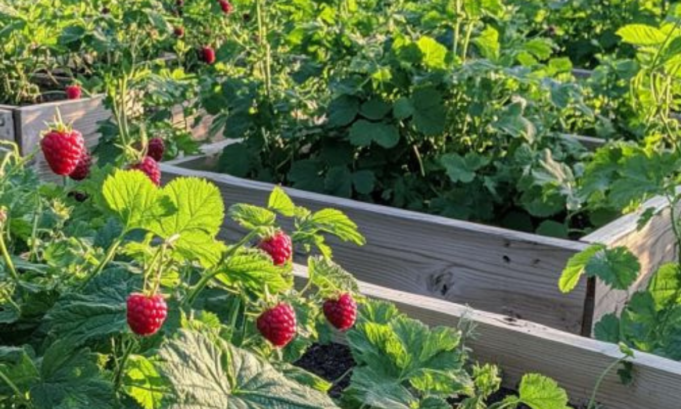Grow the Juiciest Raspberries with Raised Beds – A Complete Guide!
If you’re dreaming of plump, delicious raspberries right from your backyard, growing them in raised beds is the way to go! This method gives you more control over soil quality, drainage, and pest management, creating the perfect environment for your raspberry plants. Whether you have poor native soil or limited space, raised beds are an excellent solution for a fruitful and easy-to-manage garden. Here’s how you can grow the biggest, juiciest raspberries with minimal effort!
🌿 Why Choose Raised Beds for Growing Raspberries?
Raised beds provide several key benefits for raspberry cultivation:
- Improved Drainage: Prevents waterlogging and root rot.
- Better Soil Control: Easily adjust soil composition and pH to suit raspberries.
- Pest & Weed Control: Raised beds reduce pest invasions and prevent weed growth.
- Longer Growing Season: The elevated soil temperature helps extend the raspberry growing season.
- Easier Maintenance: Raised beds make gardening more accessible with less bending.
🌱 Step-by-Step Guide to Growing Raspberries in Raised Beds
1️⃣ Choose the Right Location:
Find a spot with 6-8 hours of direct sunlight a day. Avoid areas prone to waterlogging and try to position your bed near a water source for easy irrigation.
2️⃣ Build Your Raised Bed:
Use durable materials like cedar or composite wood for the frame. Make sure your bed is at least 12 inches deep to accommodate raspberry roots.
3️⃣ Prepare the Soil:
Create a well-draining soil mix rich in organic matter like compost. The pH should be slightly acidic (between 5.5-6.5) for optimal raspberry growth.
4️⃣ Plant Your Raspberries:
Space canes 18 inches apart and plant them at the same depth as they were in their pots. Water thoroughly after planting and mulch to retain moisture.
5️⃣ Caring for Your Raspberries:
Regularly water the plants, especially during dry spells. Prune annually to remove dead growth and encourage new canes. Mulch to keep weeds at bay and maintain moisture.
🛠 Troubleshooting Common Challenges in Raised Bed Raspberry Growing
While raised bed raspberries are relatively low-maintenance, there are some common challenges to watch out for:
- Pests: Aphids and raspberry beetles can be a problem. Use organic methods like neem oil or insecticidal soap to manage them.
- Diseases: Powdery mildew and root rot can occur. Ensure proper spacing, good air circulation, and avoid overwatering.
- Weeds: Raised beds help reduce weed growth, but regular mulching is key to keeping them in check.
🍇 Harvesting and Enjoying Your Raspberries
Raspberries are ready to harvest when they easily detach from the plant. Pick them regularly to encourage continued fruiting. Enjoy your fresh raspberries on their own, or use them in delicious jams, desserts, or smoothies. If you have a surplus, store them in the refrigerator for a few days or freeze them for long-term storage.
🌟 Final Thoughts: Raised Beds for Bigger, Juicier Raspberries
Raised beds offer the ideal growing environment for raspberries, leading to healthier plants and larger, tastier berries. By following this guide, you’ll have the tools and knowledge to create a thriving raspberry garden in your own backyard. Whether you’re new to gardening or a seasoned pro, raised beds make raspberry cultivation easier, more efficient, and incredibly rewarding.
Ready to grow the juiciest raspberries ever? Start your raised bed garden today and enjoy the sweet fruits of your labor!









